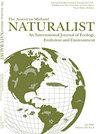Limited Co- existence of Native Unionids and Invasive Dreissenid Mussels more than 30 Y Post Dreissenid Invasion in a Large River System
IF 0.6
4区 环境科学与生态学
Q4 Agricultural and Biological Sciences
引用次数: 2
Abstract
Abstract. There are serious concerns for native freshwater mussel survival (Bivalvia: Unionidae) in the Laurentian Great Lakes region after populations were seemingly pushed to the brink of extirpation following the introduction of dreissenid mussels (Dreissena polymorpha and D. rostriformis bugensis) in the mid-1980s. The Detroit River was the first major river system in North America to be invaded by dreissenids, and unionids were considered extirpated from the river by 1998. Since then several unionid refuges (areas with relatively low dreissenid impact and surviving unionids) have been found in coastal areas of lakes St. Clair and Erie, but no documentation exists in the Detroit River. To assess dreissenid presence and potential unionid persistence, a mixture of stratified random, historical, and potential refuge sites were surveyed during summer 2019 in the Detroit River. Unionid and dreissenid habitat use was further investigated with analysis of variance and classification tree analyses. Of the 56 sites surveyed, only five sites had live unionids totaling 220 animals of 11 species. More than 2000 unionid shells of 31 species were collected from 39 sites, confirming the large and diverse unionid populations that existed prior to the dreissenid invasion. Ninety-eight percent of live unionids found showed evidence of past or present dreissenid attachment. Estimated dreissenid densities were highly variable with river location and ranged from 0 to 5673 live individuals per m2, with the largest densities concentrated in the upstream half of the Detroit River. Despite their previously assumed extirpation from the Detroit River, live unionids were found during this comprehensive survey. Although only 40% of the historical species within the unionid assemblage remains, our results suggest, in the right conditions, some coexistence is possible among some species of unionids and dreissenids in this large river system.德莱森贻贝入侵30多年后在大型河流系统中的有限共存
摘要自20世纪80年代中期引进多形贻贝(Dreissena polymorpha和D. rostriformis bugensis)后,劳伦森大湖地区的本地淡水贻贝(双壳贝科:Unionidae)种群似乎被推向灭绝的边缘,人们对其生存存在严重担忧。底特律河是北美第一个被松虫入侵的主要河流系统,到1998年,人们认为松虫已经从这条河上灭绝了。从那时起,在圣克莱尔湖和伊利湖的沿海地区发现了几个联邦避难所(相对较低的德雷塞尼德影响和幸存的联邦),但在底特律河没有记录。为了评估德雷塞尼德的存在和潜在的联合持久性,2019年夏季在底特律河对分层随机、历史和潜在的避难所进行了调查。利用方差分析和分类树分析进一步研究了银联和松类的生境利用情况。在调查的56个地点中,只有5个地点有活的群落,总共有11个物种的220只动物。在39个地点收集到31个物种的2000多个联甲壳,证实了在德莱森德入侵之前存在的庞大而多样的联甲种群。发现的98%的活工会成员显示出过去或现在对德雷塞尼德的依恋。估计的德雷森德密度随河流位置变化很大,范围为0 ~ 5673只/ m2,最大密度集中在底特律河上游。尽管之前人们认为它们已经从底特律河中灭绝了,但在这次全面调查中发现了活的银联鱼。尽管unionid组合中只有40%的历史物种仍然存在,但我们的研究结果表明,在适当的条件下,在这个大型河流系统中,unionid和dreissenids的某些物种可能共存。
本文章由计算机程序翻译,如有差异,请以英文原文为准。
求助全文
约1分钟内获得全文
求助全文
来源期刊

American Midland Naturalist
环境科学-生态学
CiteScore
1.20
自引率
0.00%
发文量
38
审稿时长
18-36 weeks
期刊介绍:
The American Midland Naturalist has been published for 90 years by the University of Notre Dame. The connotations of Midland and Naturalist have broadened and its geographic coverage now includes North America with occasional articles from other continents. The old image of naturalist has changed and the journal publishes what Charles Elton aptly termed "scientific natural history" including field and experimental biology. Its significance and breadth of coverage are evident in that the American Midland Naturalist is among the most frequently cited journals in publications on ecology, mammalogy, herpetology, ornithology, ichthyology, parasitology, aquatic and invertebrate biology and other biological disciplines.
 求助内容:
求助内容: 应助结果提醒方式:
应助结果提醒方式:


